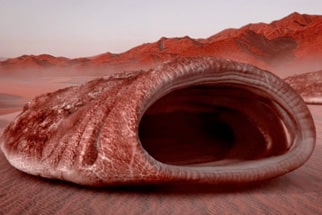Experts frequently express that certain planets are excessively hot, chilly or poisonous to help life. The catch, nonetheless, is that those individuals are truly simply discussing life as we know it here on Earth. By that same token, when wanderers investigating different planets search out synthetic marks connected with life structures, they’re just ready to recognize chemicals that we know to search for. That is the reason Swiss researchers from the EPFL examination focus have made a gadget that distinguishes tiny life, taking into account nanoscale developments rather than science.
Created via specialists Giovanni Dietler, Sandor Kasas and Giovanni Longo, the ultra-delicate movement sensor uses innovation that is as of now utilized as a part of the nuclear energy magnifying instrument. On account of the magnifying lens, a minor sharp-tipped test is moved over the surface being imaged. That test takes the manifestation of a cantilever – one end is secured to the magnifying instrument, while the other (the pointy end) is allowed to climb up and down as it’s influenced by the shapes and different properties of the surface. The magnifying lens utilizes a laser to gauge those minute developments, and returns to make a picture of the surface based upon them. On the EPFL movement sensor, a little cantilever stretches out evenly from the gadget. At the point when minuscule living things, for example, individual cells or bacterium are put on its free end, even their general metabolic capacities will result in the cantilever to vibrate. Similarly as with the magnifying lens, those developments are recognized by means of a laser.
At the point of testing the framework, the researchers had the capacity locate development in things, for example, microorganisms, yeast, mouse and human cells. They were additionally ready to identify and disconnect living beings from soil and water tests, which quit delivering readings once medications were utilized to slaughter them. In the prompt future, proposed applications for the engineering incorporate things like medication improvement. For that specific situation, live microscopic organisms or malignancy cells could be set on a cantilever and afterward subjected to a prescription planned to kill them – the sensor would tell analysts how altogether the solution did its occupation. Not far off, nonetheless, the EPFL group might for sure want to see shows of the movement sensors introduced on vehicles like the Curiosity Rover, serving to look for extraterrestrial life. That is accepting that life structures on different planets do move, regardless of the possibility or degree of movement. It will help us recognize the forms extraterrestrial life might be taking unseen to the human eye.
